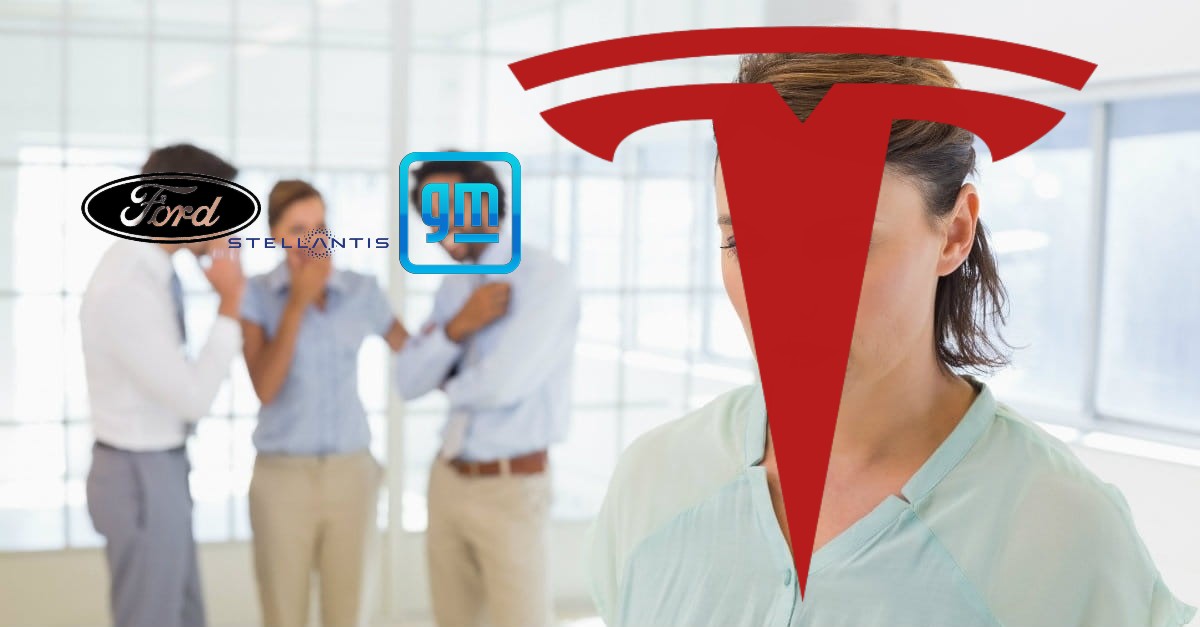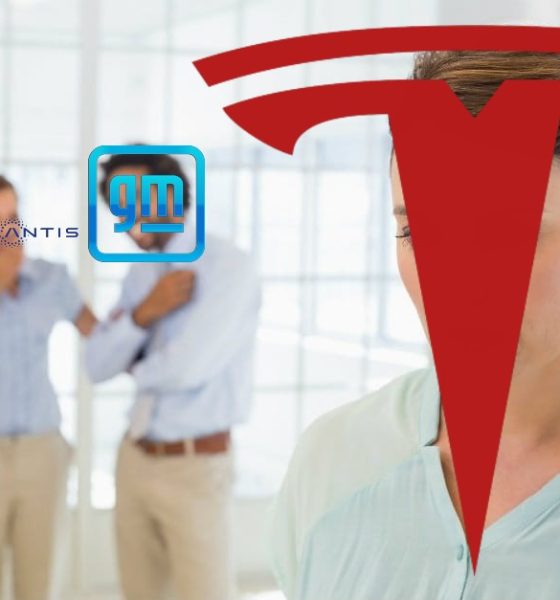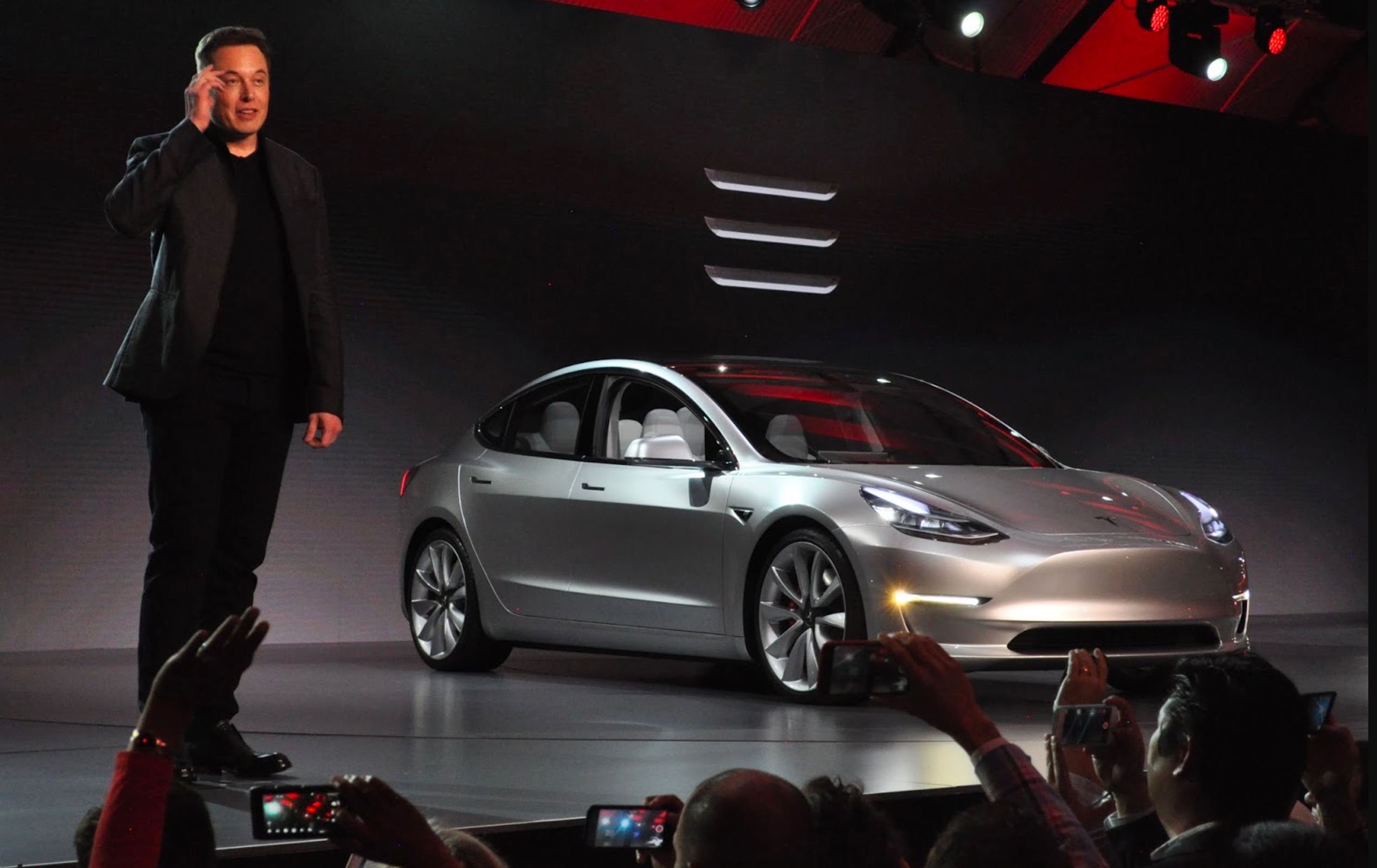

News
Tesla’s snub from White House EV event: the Pros and Cons
As the United States government continues its monumental push of domestic automakers to transition to electrification, President Joe Biden and fellow White House staff have invited companies like Ford, General Motors, and Stellantis to Washington to discuss what steps can be taken at the federal level to reach lofty EV delivery goals. However, perhaps the Biden Administration’s biggest ally, Tesla, wasn’t there because it was not extended an invitation. While CEO Elon Musk called the no-invite “odd,” there are potentially some bright spots in the situation, although the question of whether they outweigh the negatives is up to the reader to decide.
White House Electrification Event for U.S. Automakers
A relatively groundbreaking announcement that comes on the heels of President Biden’s request for legacy automakers to commit to a 40% electrified fleet by 2030, the companies agreed to a loftier but more satisfying figure of 50%. Now that half of all legacy automaker vehicles sold in 2030 will be electric, the big question is, how will it work? How will this plan be carried out?
Effectively, a game plan is likely being discussed among the White House staff and the leaders of the automakers who were invited to the event. With each company outlining specific goals through various announcements over the past several years, it is now time for action. The talking is done, a plan needs to be laid out and completed. The thing about electrification is that it is vastly different from building an ICE car, which each of these companies has long, storied, and successful histories of doing. Building an electric vehicle is a completely different project, and it goes much further than putting some electric motors and batteries in a pack and calling it an EV. There needs to be efficient and effective software, the batteries need to have a specific cell chemistry to operate for a long time, charging infrastructures need to be established, along with many other factors.
Tesla’s absence from White House EV event sidestepped in Pete Buttigieg interview
The overall issue that many of these companies have when transitioning to electrification is finding out how to make EVs operational. Far too many times, we have heard about incredible EVs that will come to the market in a few years, they are going to be amazing and effective, and they will show Tesla who is boss. But every time this has happened, these cars fall short of their mark.
The Cons: Why Tesla should be at the White House, no questions asked
Tesla has the experience to help these automakers navigate through extremely difficult times, which are likely to come based on many of these companies’ current situations with developing electric powertrains. Creating one or two vehicles and selling between thirty and fifty thousand of them definitely helps the cause. However, keeping these delivery rates and simply putting a few new bells and whistles in the interior doesn’t make it a new car. Consumers want new technology, new looks, new aesthetics. This means cars with more range, more features, and sleeker, more modern designs.
The goal should be for these automakers to develop a plan by 2030, about eight and a half years, to have four to five different electrified models on the road by that year. Rolling out that many new models while simultaneously engineering and building effective electric powertrains is extremely difficult. Many companies may find that the road to this goal is not necessarily as simple as they thought.
Ask Tesla about it.
After unveiling the Model 3, Tesla and CEO Elon Musk entered the toughest few years of Tesla’s short life.
However, Tesla overcame all odds by delivering four electric models in just eight years: the Model S in 2012, the Model X in 2015, the Model 3 in 2017, and the Model Y in 2020.
Ideally, Tesla would be the biggest advantage for all of these companies from a consultant standpoint. If Tesla’s goal really is to accelerate the world’s transition to sustainable energy, it would have no issue helping car companies figure out where their shortcomings are. No technological advantages would need to be shared. Still, a roadmap of how Tesla navigated through the toughest portion of its existence by releasing popular, profitable, and effective EVs would undoubtedly help. Not to mention, these companies are much more financially stable than Tesla was while it was ramping up its production of vehicles. That would only help the cause as money really isn’t an issue.
Another negative comes from a perceptive standpoint, but it can’t be a good look for the Biden administration to go through with this event without having the industry leader there. It would be like having a tech event without Apple, an Olympic highlight reel without Phelps, a chef’s get-together without Gordon Ramsay. It just doesn’t make sense, and on top of it, it doesn’t necessarily show that the country’s leaders support Tesla’s efforts. After all, Joe Biden hasn’t uttered the word “Tesla” since he’s taken office.
The Pros: Why it might not be so bad after all
If the purpose of this event is to get automakers on board with electrification, then Tesla really would have no business being there. After all, the companies invited have pledged to have half of their vehicle deliveries be electric in 2030. Tesla already delivers only electric vehicles, and it has since day 1. Some could see it as the Straight A student going to tutoring; it’s really kind of pointless.
Additionally, it might be a good look for Tesla not to go to the event from a political standpoint. Currently, 52% of Americans disapprove of Biden’s job performance. This is according to Rasmussen, which updates the poll daily.
Tesla also does not need any assistance federally, and it does not need any entity to tell it how to handle its business. This is something that Tesla should take pride in. The hard-working giants who have ruled the automotive industry for a century need guidance on continuing to move forward.
For Tesla, the answers came through its own hard work and its own want to change the world for the better.
What do you think? Let us know in the comments below, or be sure to email me at joey@teslarati.com or on Twitter @KlenderJoey.

Elon Musk
Tesla’s Elon Musk: 10 billion miles needed for safe Unsupervised FSD
As per the CEO, roughly 10 billion miles of training data are required due to reality’s “super long tail of complexity.”

Tesla CEO Elon Musk has provided an updated estimate for the training data needed to achieve truly safe unsupervised Full Self-Driving (FSD).
As per the CEO, roughly 10 billion miles of training data are required due to reality’s “super long tail of complexity.”
10 billion miles of training data
Musk comment came as a reply to Apple and Rivian alum Paul Beisel, who posted an analysis on X about the gap between tech demonstrations and real-world products. In his post, Beisel highlighted Tesla’s data-driven lead in autonomy, and he also argued that it would not be easy for rivals to become a legitimate competitor to FSD quickly.
“The notion that someone can ‘catch up’ to this problem primarily through simulation and limited on-road exposure strikes me as deeply naive. This is not a demo problem. It is a scale, data, and iteration problem— and Tesla is already far, far down that road while others are just getting started,” Beisel wrote.
Musk responded to Beisel’s post, stating that “Roughly 10 billion miles of training data is needed to achieve safe unsupervised self-driving. Reality has a super long tail of complexity.” This is quite interesting considering that in his Master Plan Part Deux, Elon Musk estimated that worldwide regulatory approval for autonomous driving would require around 6 billion miles.
FSD’s total training miles
As 2025 came to a close, Tesla community members observed that FSD was already nearing 7 billion miles driven, with over 2.5 billion miles being from inner city roads. The 7-billion-mile mark was passed just a few days later. This suggests that Tesla is likely the company today with the most training data for its autonomous driving program.
The difficulties of achieving autonomy were referenced by Elon Musk recently, when he commented on Nvidia’s Alpamayo program. As per Musk, “they will find that it’s easy to get to 99% and then super hard to solve the long tail of the distribution.” These sentiments were echoed by Tesla VP for AI software Ashok Elluswamy, who also noted on X that “the long tail is sooo long, that most people can’t grasp it.”
News
Tesla earns top honors at MotorTrend’s SDV Innovator Awards
MotorTrend’s SDV Awards were presented during CES 2026 in Las Vegas.

Tesla emerged as one of the most recognized automakers at MotorTrend’s 2026 Software-Defined Vehicle (SDV) Innovator Awards.
As could be seen in a press release from the publication, two key Tesla employees were honored for their work on AI, autonomy, and vehicle software. MotorTrend’s SDV Awards were presented during CES 2026 in Las Vegas.
Tesla leaders and engineers recognized
The fourth annual SDV Innovator Awards celebrate pioneers and experts who are pushing the automotive industry deeper into software-driven development. Among the most notable honorees for this year was Ashok Elluswamy, Tesla’s Vice President of AI Software, who received a Pioneer Award for his role in advancing artificial intelligence and autonomy across the company’s vehicle lineup.
Tesla also secured recognition in the Expert category, with Lawson Fulton, a staff Autopilot machine learning engineer, honored for his contributions to Tesla’s driver-assistance and autonomous systems.
Tesla’s software-first strategy
While automakers like General Motors, Ford, and Rivian also received recognition, Tesla’s multiple awards stood out given the company’s outsized role in popularizing software-defined vehicles over the past decade. From frequent OTA updates to its data-driven approach to autonomy, Tesla has consistently treated vehicles as evolving software platforms rather than static products.
This has made Tesla’s vehicles very unique in their respective sectors, as they are arguably the only cars that objectively get better over time. This is especially true for vehicles that are loaded with the company’s Full Self-Driving system, which are getting progressively more intelligent and autonomous over time. The majority of Tesla’s updates to its vehicles are free as well, which is very much appreciated by customers worldwide.
Elon Musk
Judge clears path for Elon Musk’s OpenAI lawsuit to go before a jury
The decision maintains Musk’s claims that OpenAI’s shift toward a for-profit structure violated early assurances made to him as a co-founder.

A U.S. judge has ruled that Elon Musk’s lawsuit accusing OpenAI of abandoning its founding nonprofit mission can proceed to a jury trial.
The decision maintains Musk’s claims that OpenAI’s shift toward a for-profit structure violated early assurances made to him as a co-founder. These claims are directly opposed by OpenAI.
Judge says disputed facts warrant a trial
At a hearing in Oakland, U.S. District Judge Yvonne Gonzalez Rogers stated that there was “plenty of evidence” suggesting that OpenAI leaders had promised that the organization’s original nonprofit structure would be maintained. She ruled that those disputed facts should be evaluated by a jury at a trial in March rather than decided by the court at this stage, as noted in a Reuters report.
Musk helped co-found OpenAI in 2015 but left the organization in 2018. In his lawsuit, he argued that he contributed roughly $38 million, or about 60% of OpenAI’s early funding, based on assurances that the company would remain a nonprofit dedicated to the public benefit. He is seeking unspecified monetary damages tied to what he describes as “ill-gotten gains.”
OpenAI, however, has repeatedly rejected Musk’s allegations. The company has stated that Musk’s claims were baseless and part of a pattern of harassment.
Rivalries and Microsoft ties
The case unfolds against the backdrop of intensifying competition in generative artificial intelligence. Musk now runs xAI, whose Grok chatbot competes directly with OpenAI’s flagship ChatGPT. OpenAI has argued that Musk is a frustrated commercial rival who is simply attempting to slow down a market leader.
The lawsuit also names Microsoft as a defendant, citing its multibillion-dollar partnerships with OpenAI. Microsoft has urged the court to dismiss the claims against it, arguing there is no evidence it aided or abetted any alleged misconduct. Lawyers for OpenAI have also pushed for the case to be thrown out, claiming that Musk failed to show sufficient factual basis for claims such as fraud and breach of contract.
Judge Gonzalez Rogers, however, declined to end the case at this stage, noting that a jury would also need to consider whether Musk filed the lawsuit within the applicable statute of limitations. Still, the dispute between Elon Musk and OpenAI is now headed for a high-profile jury trial in the coming months.








